I had been mentioning the allotment for some time in articles, saying what I grew and what problems and pleasures I had, and some of the readers asked me to show them pictures of my allotment. I delayed a little, for two reasons, one was that last week I was working full time invigilating exams, and secondly my camera had broken. But today was bank holiday, a national day off, and I had plenty of time [at least before I travel to Cambridge], so having gone down to do some weeding, much needed after the spell of rain that Britain has been having, I took some pictures.

The allotment
by frankbeswick
This article gives a look at an allotment in the North West of England.
The allotment is about 400 square yards, 10 by 40 set in an urban area. It is one of about forty plots on a suburban road in Stretford, a subtown that adjoins Manchester. The road outside is lined by large trees,. which overhang the plot. The secondary school on the road has well-behaved children, so we get no vandalism.
In the picture below you see some of my raised beds, besides which is a barrow full of weeds to be composted. I make the beds from pallet collars and fill them with compost. to the left you see my flower bed [needs weeding after the rain, and the flowers have yet to bloom.] One of the raised beds contains potatoes. The others that you can see have just been planted with salad and carrot seeds, today, so there is nothing visible yet.
The blue piping is to fasten netting to create cloches to protect plants against the avian pirates, woodpigeons, which devour cabbages.My rake and hoe are visible.
In the picture below you see raised beds. I use tyres as planters. Notice that they are near trees. You cannot grow much in the ground below trees, so I place the tyres full of compost below the trees, so they do not compete with the trees for nourishment. I also use deeper raised beds. I put one pallet collar atop another and fill them with compost. These raised beds contain onions and potatoes, which are growing beautifully.
The picture below shows a view from the front, looking over conventional beds, which contain onions and potatoes. You may see some sweet corn, but it is small at present.
Note the paths made of woodchip. This is sent free by the council, whose tree care department shreds trees that need felling and sends them to us for recycling.
The greenhouse that you see is still under construction.
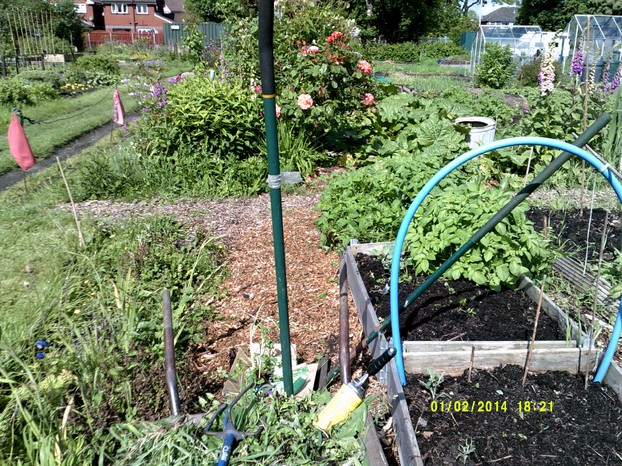 the wheel barrow is an essential tool |
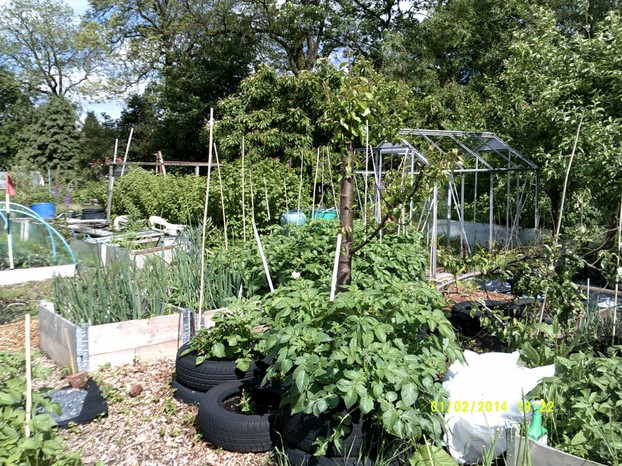 Raised beds |
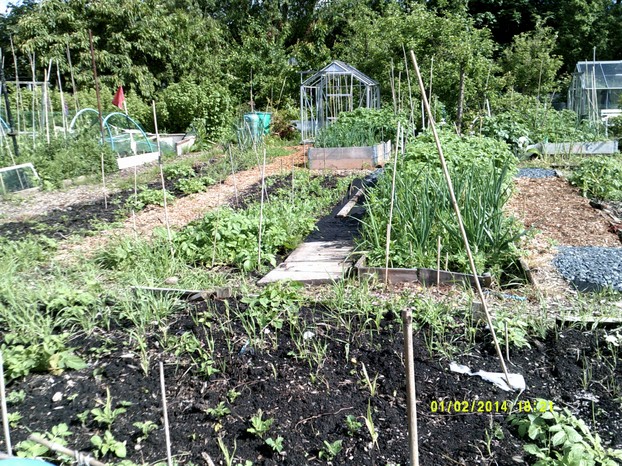 The front of the allotment |
Smaller beds.
Part of the art of gardening is using small spaces. This little space tucked away near the raised beds and a pear tree was only made this year. I have filled it with leeks.The hoops seen in the background are on my neighbour's plot, as are the glass panes. Note some ground cover polythene, to suppress weeds, visible in the corner.
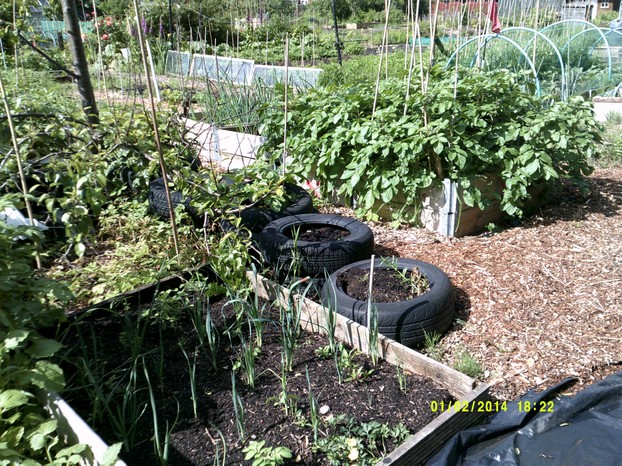 A small bed contains leeks |
The orchard
The rear of the plot contains fruit trees and bushes. There are apples, a pear, a plum, a damson and a cherry. In this part there are rhubarb plants and also some raspberry canes. Note the small pond, which I have to keep frogs, which attack slugs. It is full of tadpoles at present. The two hoops are there to hold a netting cover if there are children visiting the plot.Towards the rear you will see pallets in a pile. This is to host nests for bumble bees and other solitary bees. These will pollinate plants. Near this area are the compost heaps and bins. It is not the best looking of places, but compost bins rarely are. The bin that you see is a garden incinerator.
The orchard
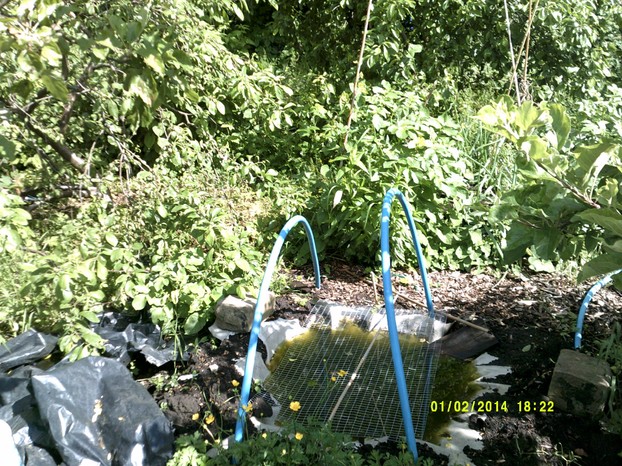 The pond |
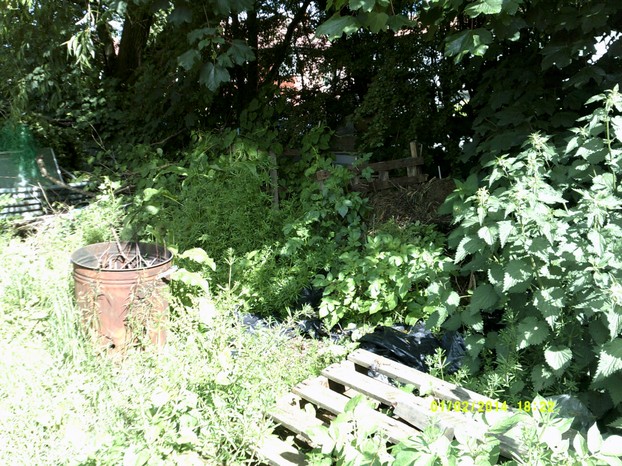 wildlife area |
Gardening books
The author's book on gardening
 | Shoots out of Eden - Christian Monastic Gardening in the British Isles This book examines the Christian thinking expressed in monastic gardens in the mediaeval period and specific types of monastic garden and the plants contained therein. It follow... |
You might also like
Growing in confined spacesAs the world urbanizes and land pressures grow, many people are turning to im...
As Winter ComesFor true allotment gardeners gardening does not cease in winter,
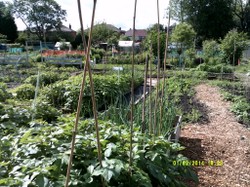


 TheThousand Year Garden27 days ago
TheThousand Year Garden27 days ago
 Women of the Gospelson 10/11/2025
Women of the Gospelson 10/11/2025
 Religious Gardenson 08/25/2025
Religious Gardenson 08/25/2025
 Doctor of the Church: John Henry Newmanon 08/03/2025
Doctor of the Church: John Henry Newmanon 08/03/2025

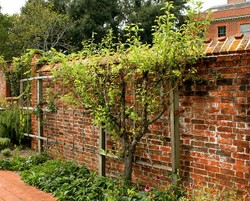
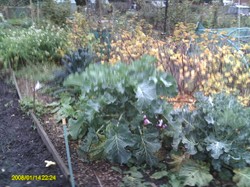
Comments
Some panes agreed window glass. They are waste after repairs.
The fourth sentence under the first subheading, Smaller beds, mentions "glass panes" on the neighboring allotment.
Might those panes be former windows? What would they be doing on the ground?
It depends on the temperature of the compost heap. The hotter the quicker
The third paragraph to your introduction identifies a barrow full of compostable weeds.
What is the lag time between barrow-ing the weeds and making compost piles?
(Western-ponders like their compost down as soon as possible, in case they might seed!)
They were worn out tyres donated by the motor repair shop where I had my car serviced. As the repair shop had to pay to have them taken away, the shop was only too happy to have them taken away for free by me..
The raised-bed tires are photogenic. They look like they never have had contact with any dirt or paved surfaces.
Did you have them cleaned before installing them or were they bought or gotten new?
Thanks. But I am never satisfied, as I can always think of something better to do. That's the problem, a garden never stands still. Changes must happen. The damson tree had to come down because of fungal infection, so I am changing the lay out to put a recreational space where it once was, a picnic table where my son, daughter-in law and soon to arrive grandchild can relax. There will be new raised beds to go in over winter, and maybe another greenhouse. My ideas will be the subject of another article later in the year.
You have an impressive garden.
I have been working on it daily for a while, so it is even tidier now. But a garden reflects its owner, and mine is functional, generally nice, but not chocolate box pretty.
You mention herbs. Every year I think of changes, and one is a herb section for next year. I am also trying to move to all raised beds, but that's winter's work. I am also thinking of a picnic table to fill in the gap left by the damson that I had to fell because of disease. I was talking to my daughter-in-law this evening and she tells me that in her homeland, Portugal, she used to picnic on her mother's orta, the Portugese for garden, and she is keen to keep up the custom.
Your allotment looks remarkably tidy :) .
I am convinced that freshly grown vegetables are the key to good health. I am particularly fond of fresh herbs. The difference between fresh and boxed, tasteless dried herbs is astonishing. I like to put a stem of mint in hot water with half a lime or half a lemon each day. very cleansing .